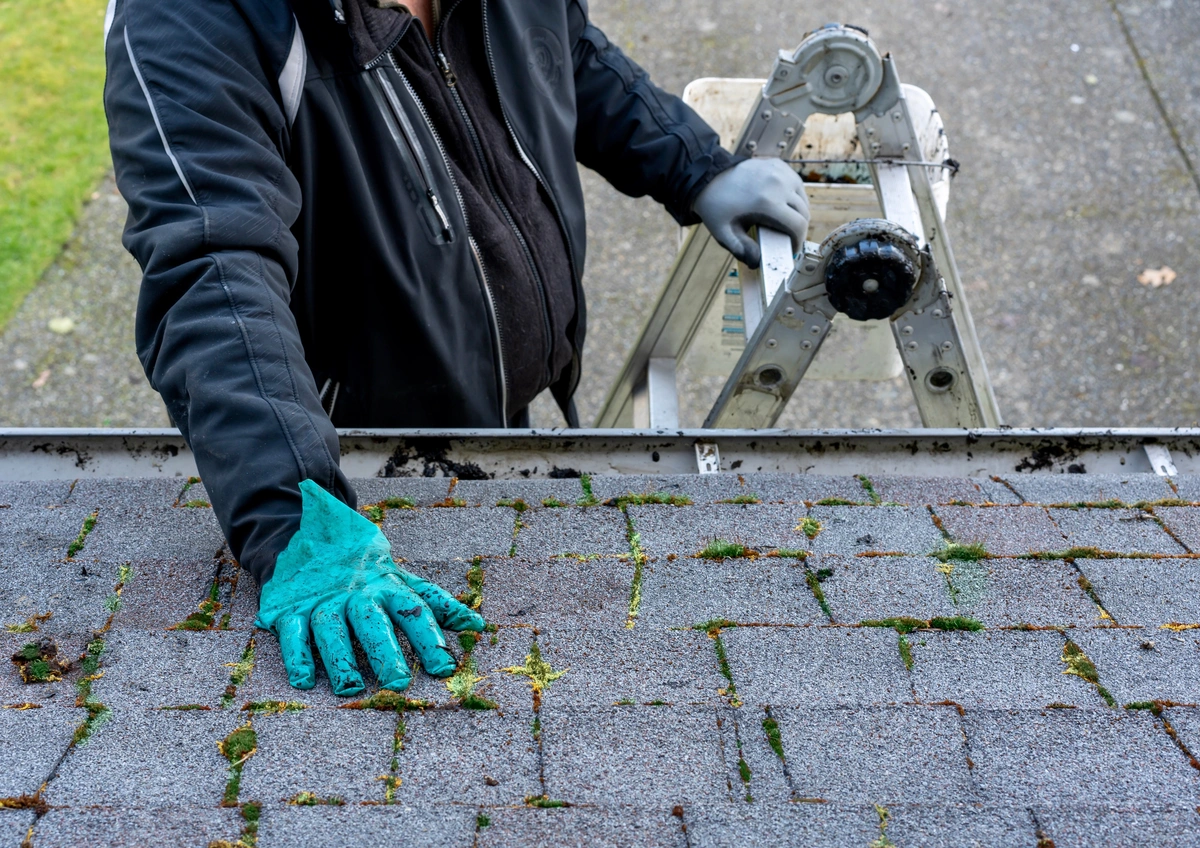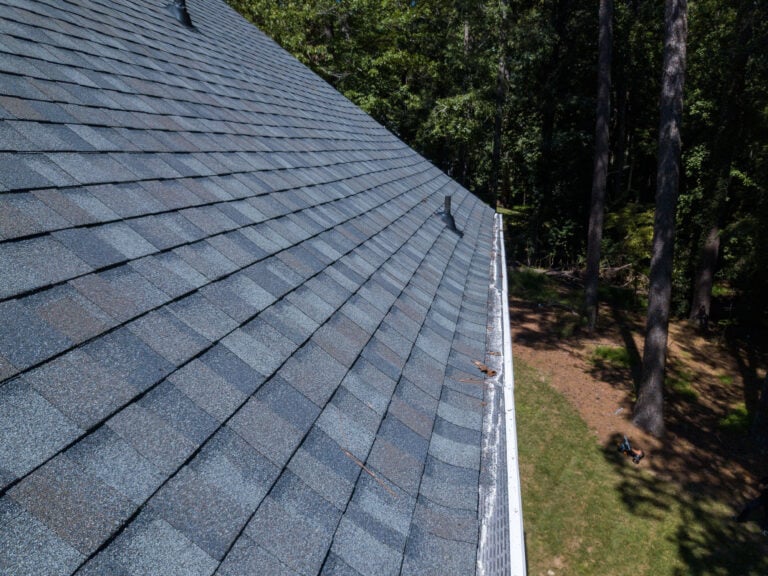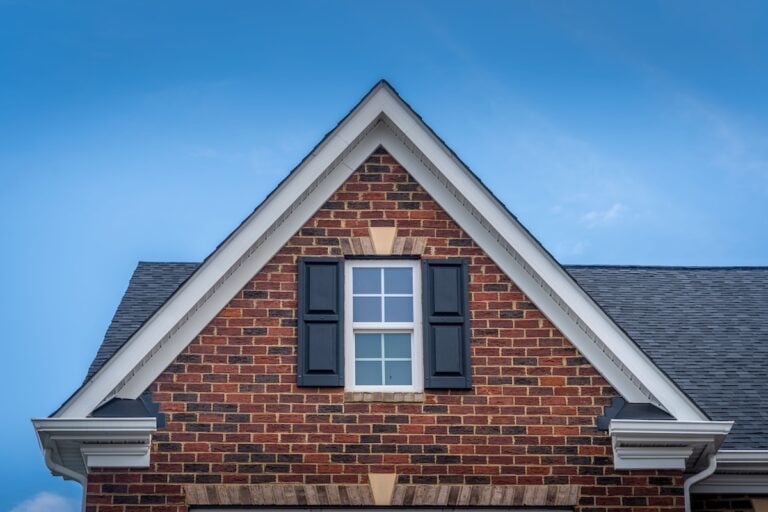If you’ve ever looked up at your roof and noticed unsightly green growth, you’re not alone. Roof moss can be a pesky problem for homeowners, not only affecting the appearance of your home but also potentially causing damage to your roof.
So let’s explore the common causes of roof moss and provide some tips on how to get rid of it.
What we’re sharing in this blog:
- The consequences of leaving moss on your roof
- How to effectively rid your roof of moss in easy steps
- 4 moss prevention tips for homeowners
Read on to learn everything you need to know about roof moss and how to get it–and keep it– off of your roof!
Why Does Roof Moss Form? 🤔
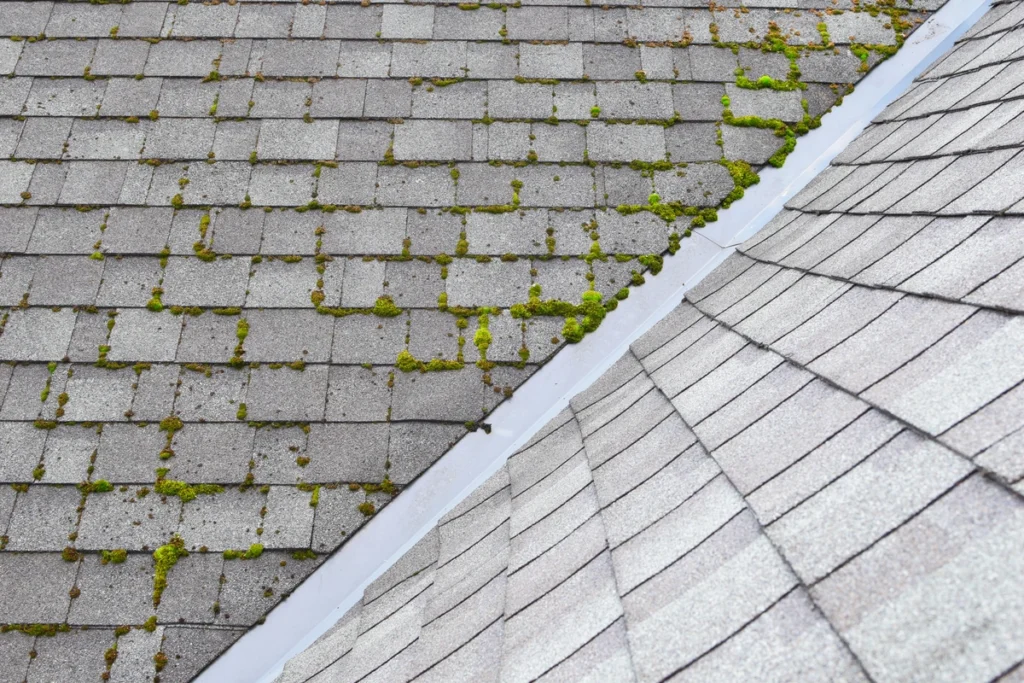
Before we jump into the solutions, let’s understand why roof moss forms in the first place. Moss growth on your roof is primarily caused by a combination of the following factors:
- Moisture: Moss thrives in damp and humid conditions. If your roof doesn’t receive enough sunlight or is frequently exposed to rain and shade, it creates an ideal environment for moss to grow.
- Shade: Overhanging trees or structures that cast shadows on your roof can promote moss growth. The lack of direct sunlight allows moss to flourish.
- Poor Ventilation: Inadequate roof ventilation can trap moisture, making it easier for moss to establish itself. Proper ventilation helps keep your roof dry.
- Aging Shingles: Older roofing materials may become porous over time, providing a suitable surface for moss to latch onto.
The Dangers of Roof Moss ⚠️
While roof moss may seem harmless, it can have some adverse effects on your home:
- Damage to Roofing Material: Moss can attach to and grow between shingles, causing them to lift or crack. This compromises the integrity of your roof.
- Reduced Roof Lifespan: The presence of moss can shorten the lifespan of your roofing material by trapping moisture and accelerating deterioration.
- Clogged Gutters: As moss sheds spores, it can clog your gutters, preventing proper water drainage.
- Increased Cooling Costs: Moss can insulate your roof, trapping heat in the summer and increasing cooling costs.
How to Get Rid of Roof Moss 🌱
Now that we understand the causes and potential problems associated with roof moss, let’s explore how to eliminate it.
Regular Roof Cleaning
A proactive approach is essential. Cleaning your roof at least once a year can prevent moss from taking hold.
Here’s how:
- Use a Roof Broom: Gently sweep the moss off the roof using a roof broom or a soft-bristle brush. Avoid scraping or using harsh materials that could damage the shingles.
- Apply a Moss Killer: After removing visible moss, apply a moss-killing solution to the affected areas. Follow the product instructions carefully to ensure you kill moss efficiently.
Preventative Measures
To keep moss at bay, consider the following preventative actions:
- Trim Overhanging Branches: Prune tree branches that shade your roof to allow more sunlight to reach the surface.
- Install Zinc or Copper Strips: These metals, when installed at the roof’s ridge, can prevent moss growth over time as rainwater washes them down, inhibiting moss spore development.
Professional Roof Cleaning
If your roof has a severe moss problem, or you’re not comfortable doing it yourself, consider hiring a professional roof cleaning service. They have the expertise and equipment to safely and effectively remove moss.
Roof Replacement
In extreme cases where the moss has caused significant damage to your roof, you might need to consider a roof replacement. It’s a more substantial investment but can be necessary for the long-term health of your home.
4 Moss Prevention Tips 🍃
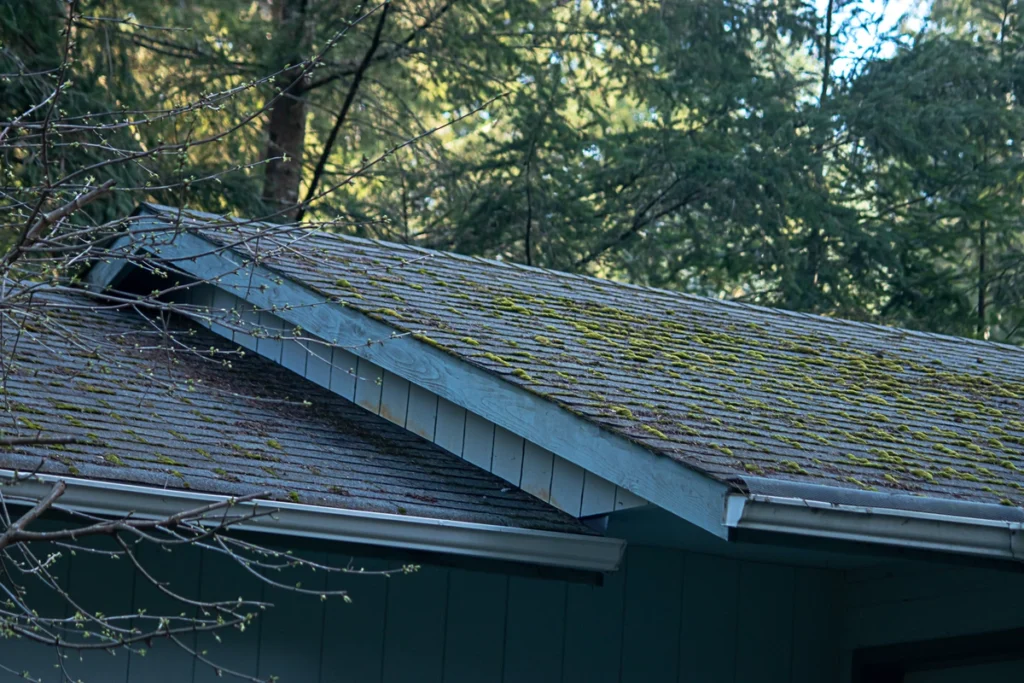
Prevention is key to avoiding the hassle of moss removal. Here are some additional tips to avoiding a moss covered roof:
1. Keep Gutters Clean
Regularly clean your gutters to prevent debris buildup, which can trap moisture and provide an ideal environment for moss.
2. Ensure Proper Ventilation
Make sure your attic and roof have adequate ventilation to reduce moisture buildup.
3. Remove Moss on Sidewalks and Driveways
If you have moss on walkways or driveways, it can easily spread to your roof. Use a pressure washer or a moss-killing solution to remove it.
4. Apply Moss-Resistant Shingles
Consider installing moss-resistant shingles when it’s time for a roof replacement. These shingles are designed to inhibit moss growth.
FAQs About Roof Moss ❓
Let’s address some frequently asked questions about roof moss:
- Is roof moss harmful to my health? Generally, roof moss is not harmful to humans. However, you should take precautions when removing it to avoid accidents.
- Can I use bleach to remove moss from my roof? While some homeowners use a bleach solution to eliminate moss, it’s not the most environmentally friendly option. Moss-killing products specifically designed for roofs are a better choice.
- Can I prevent moss growth with DIY solutions? Preventing moss growth with DIY solutions like dish soap and water can be less effective than specialized moss-killing products or professional cleaning services.
- Is moss more common in certain climates? Moss tends to be more prevalent in damp, shaded, and cool climates, but it can grow almost anywhere under the right conditions.
- Can moss grow on any type of roofing material? Moss can grow on various roofing materials, including asphalt shingles, wood shingles, and even metal roofs.
Keep Your Roof Moss-Free For a Healthier Home 🏡
Roof moss is a common issue for homeowners, but with proper maintenance and preventative measures, you can keep it at bay. Regular cleaning, trimming overhanging branches, and ensuring good ventilation are essential steps to maintain the health and appearance of your roof. Remember that moss prevention is more manageable than moss removal, so take action to protect your home and extend the life of your roof.
Reach out to our roofing experts at Palladium Roofing today to get rid of the pesky moss on your roof once and for all!


